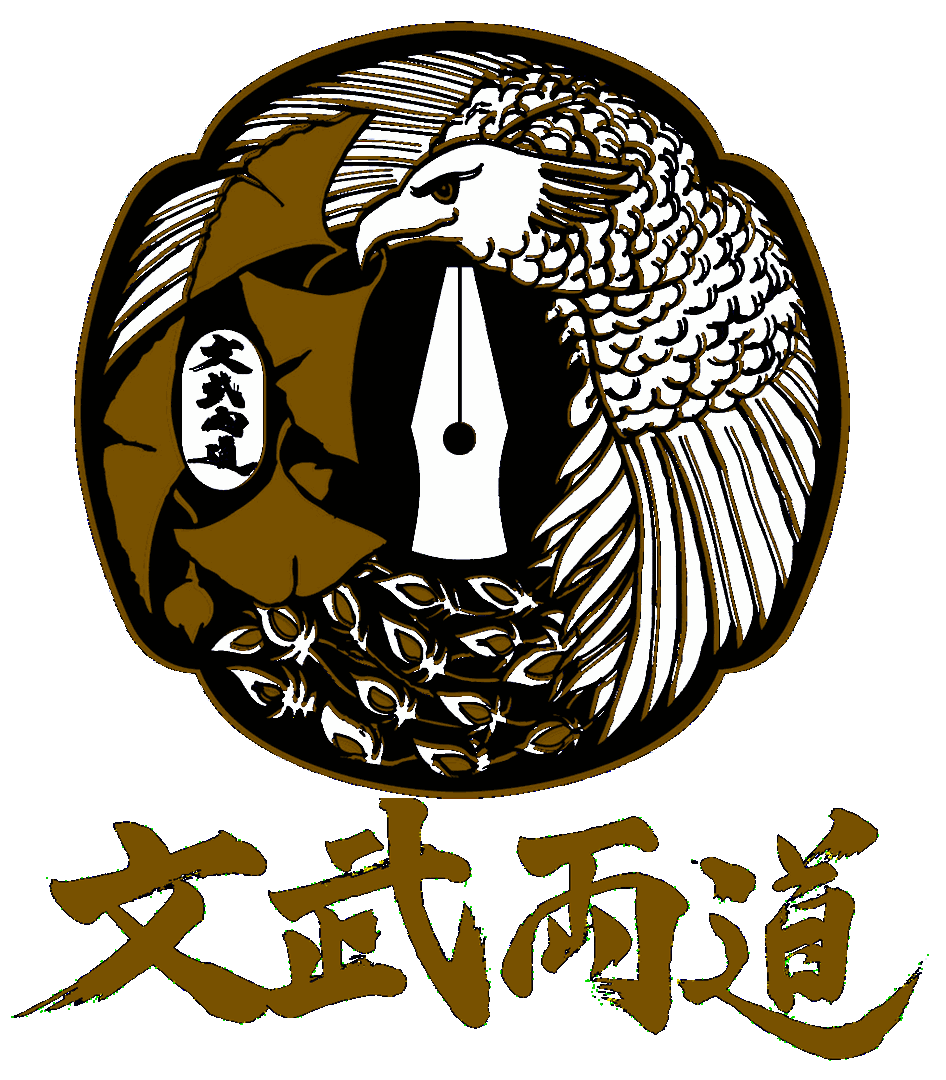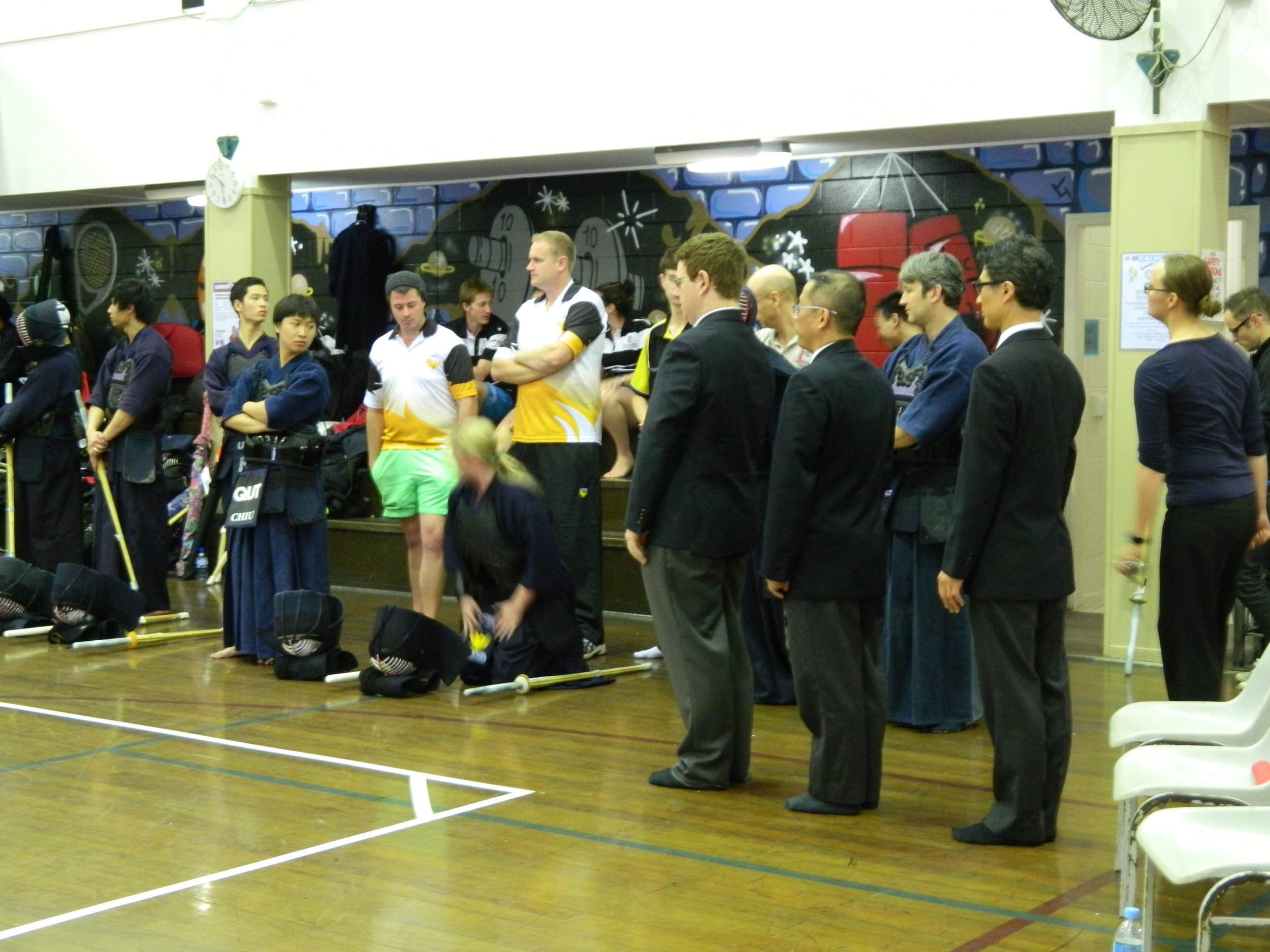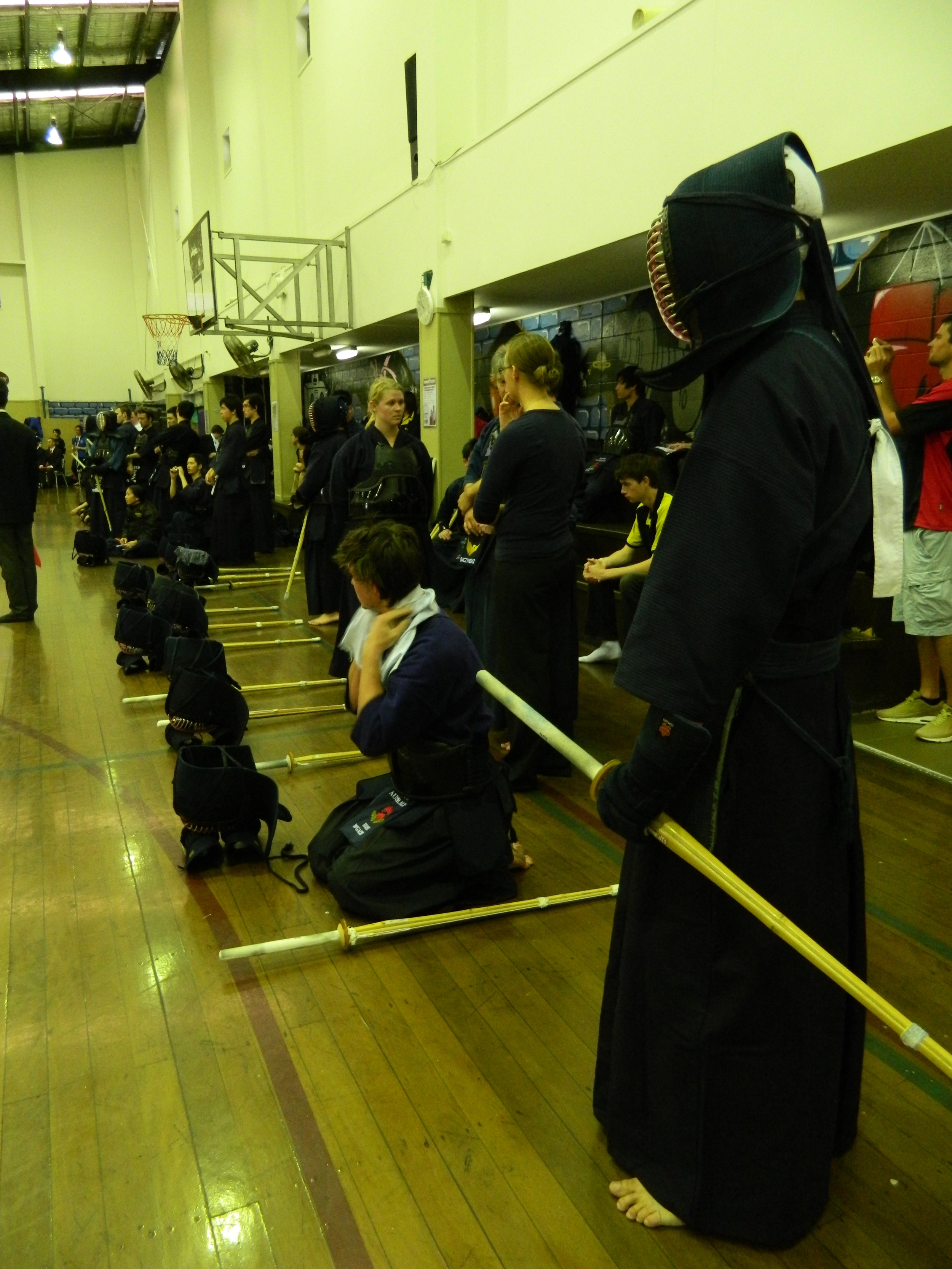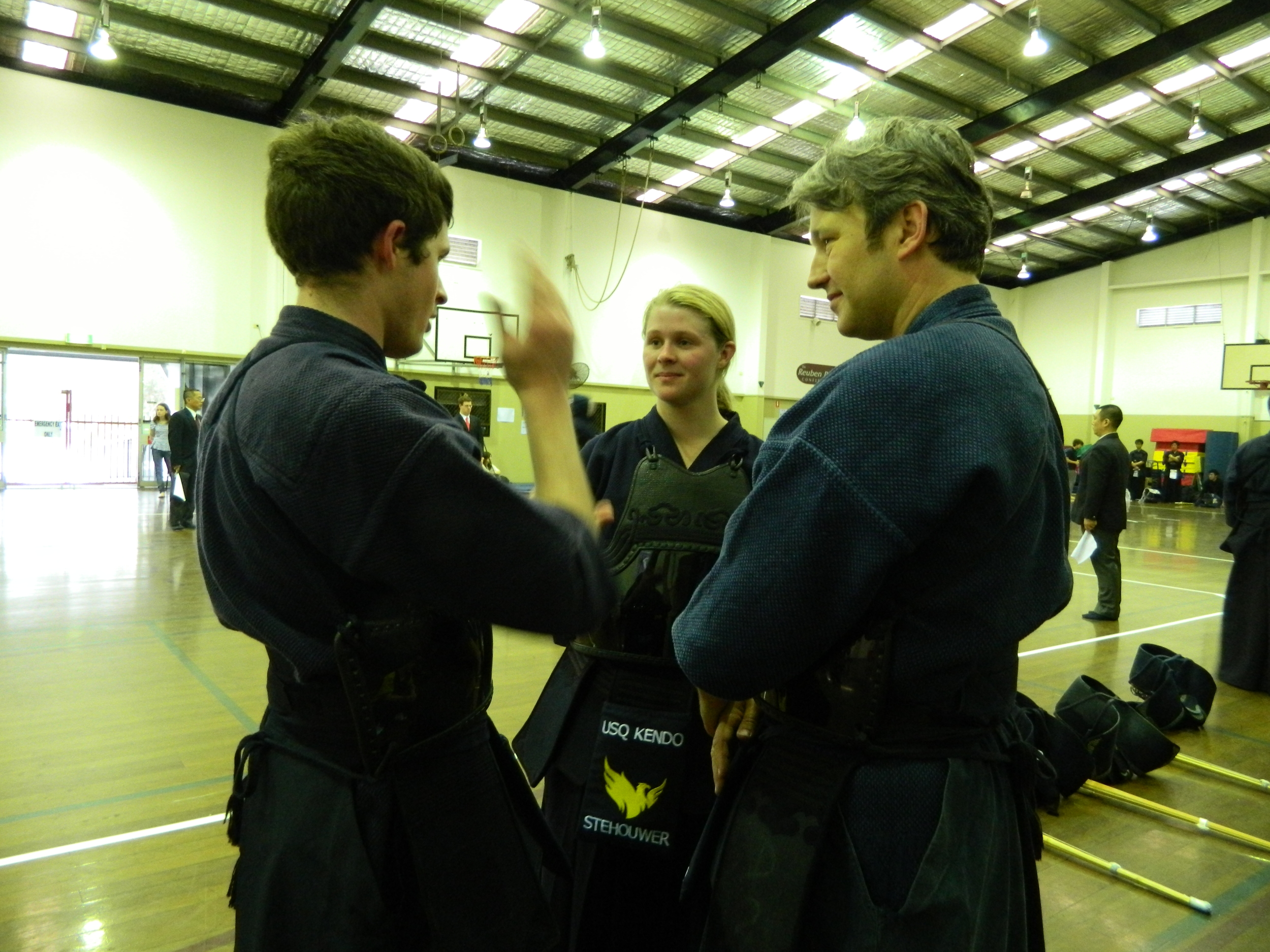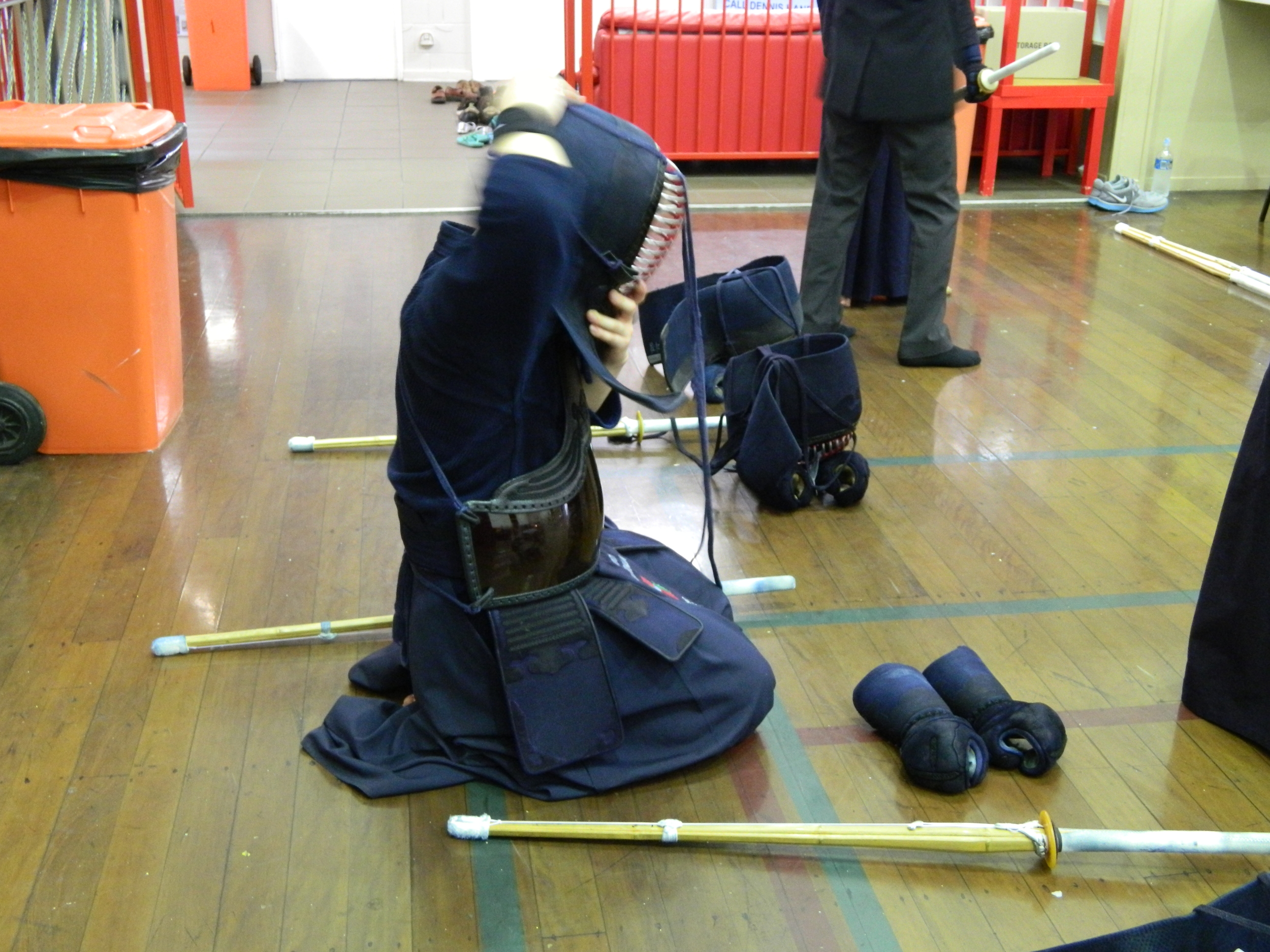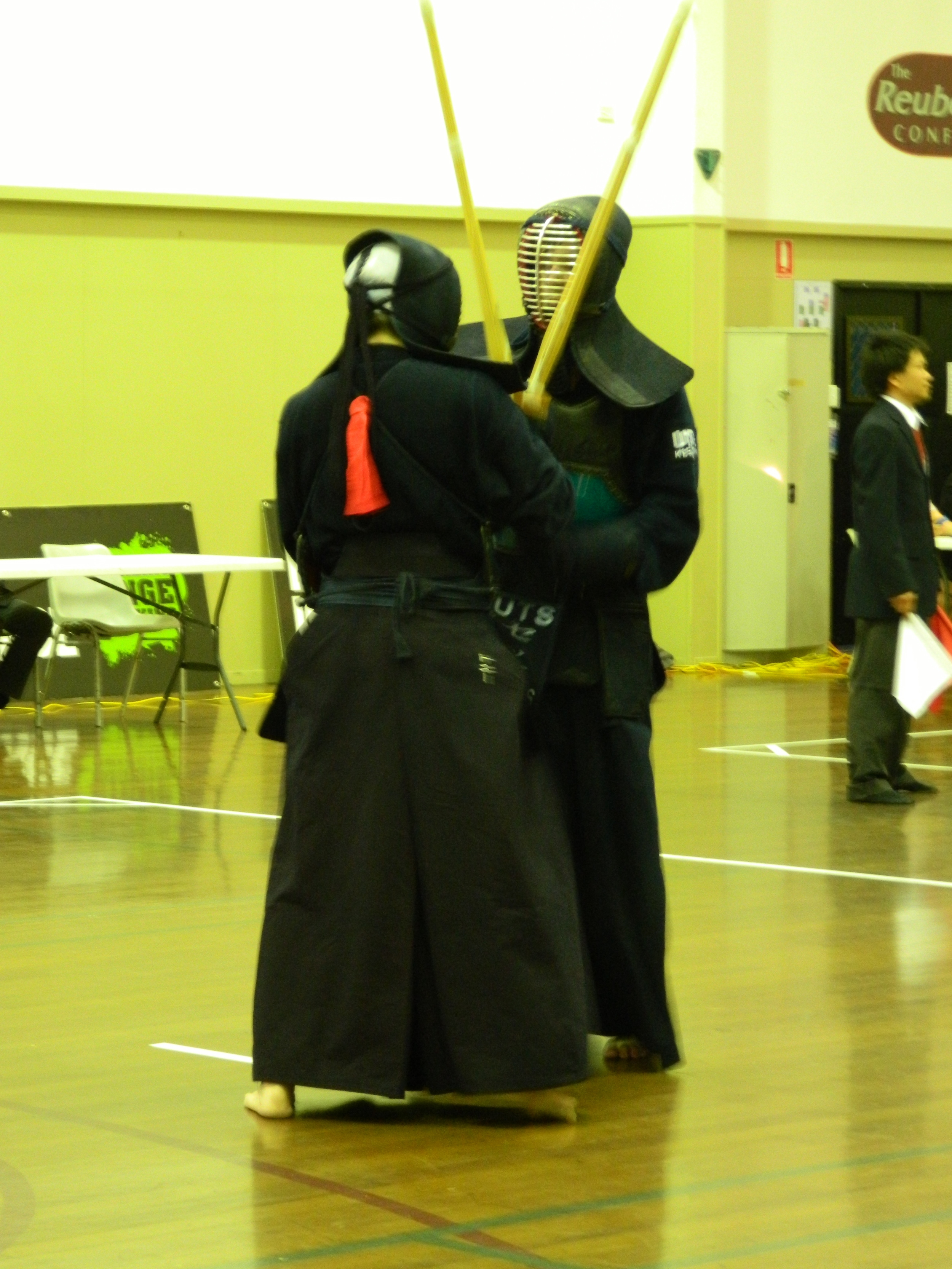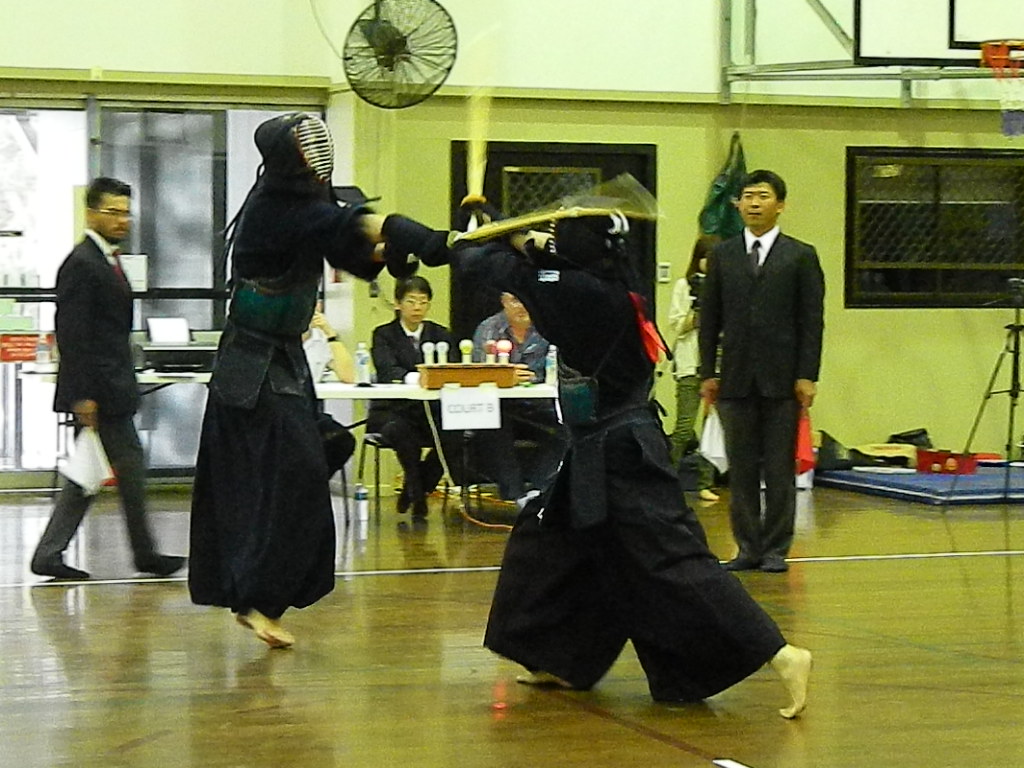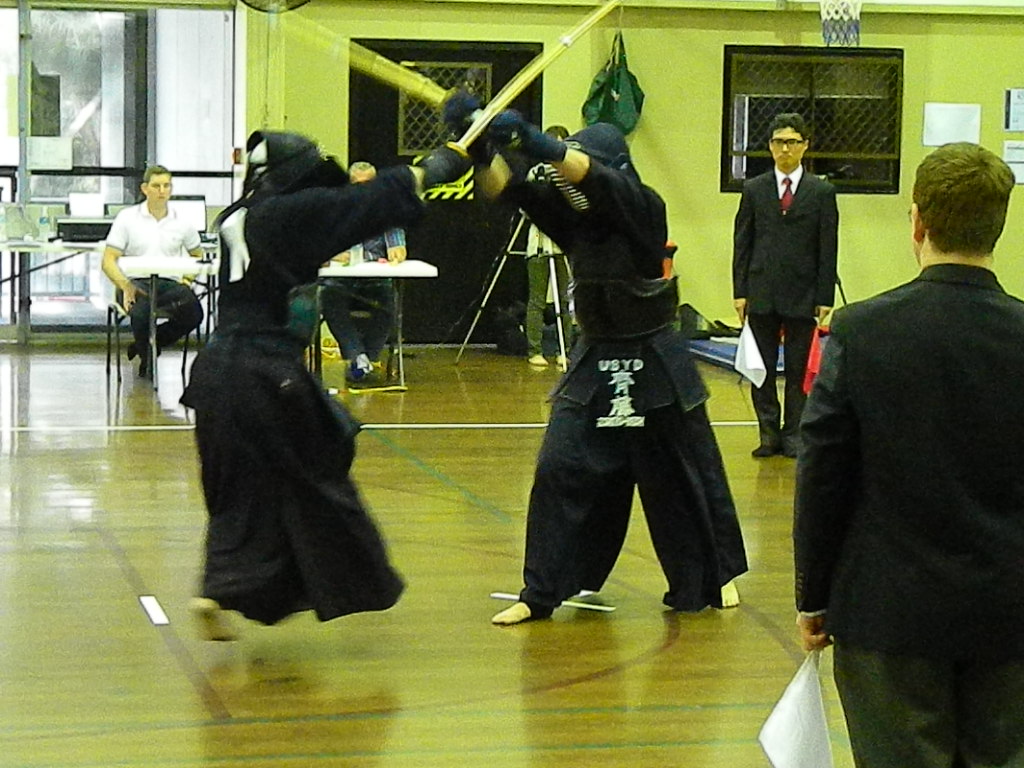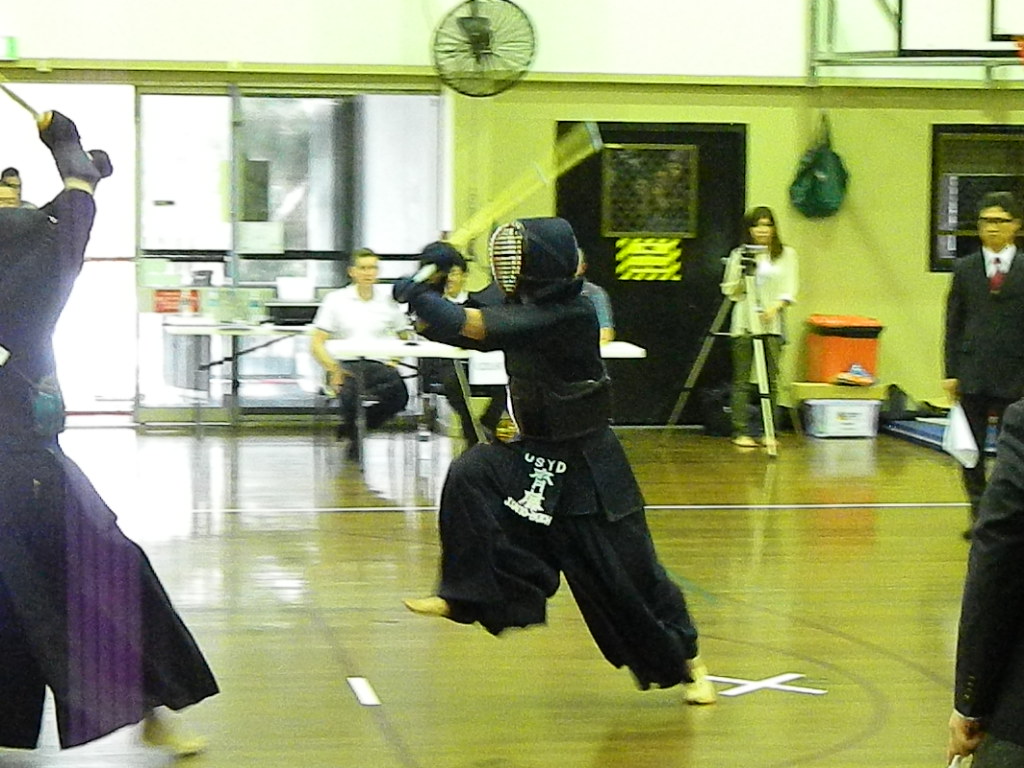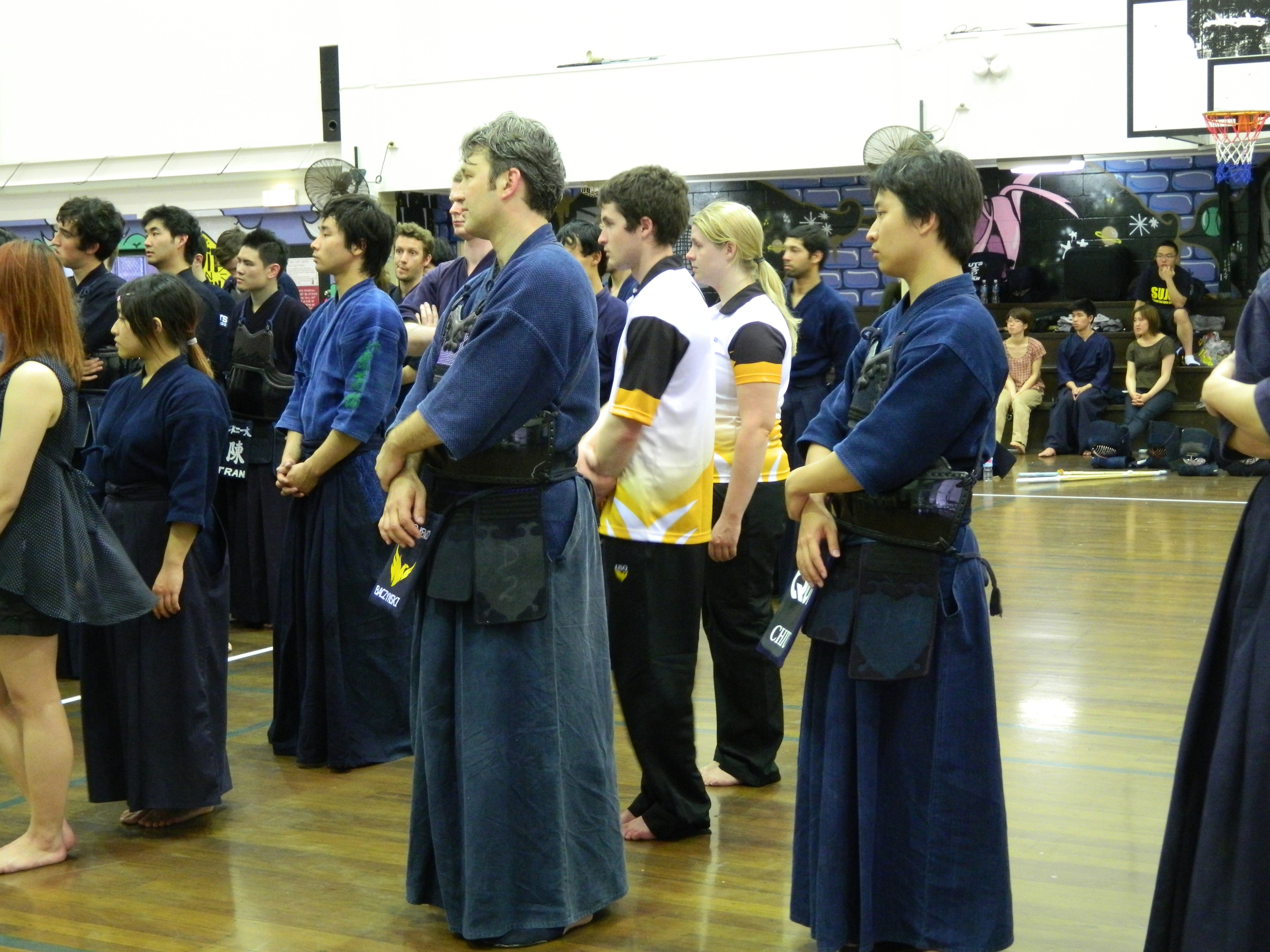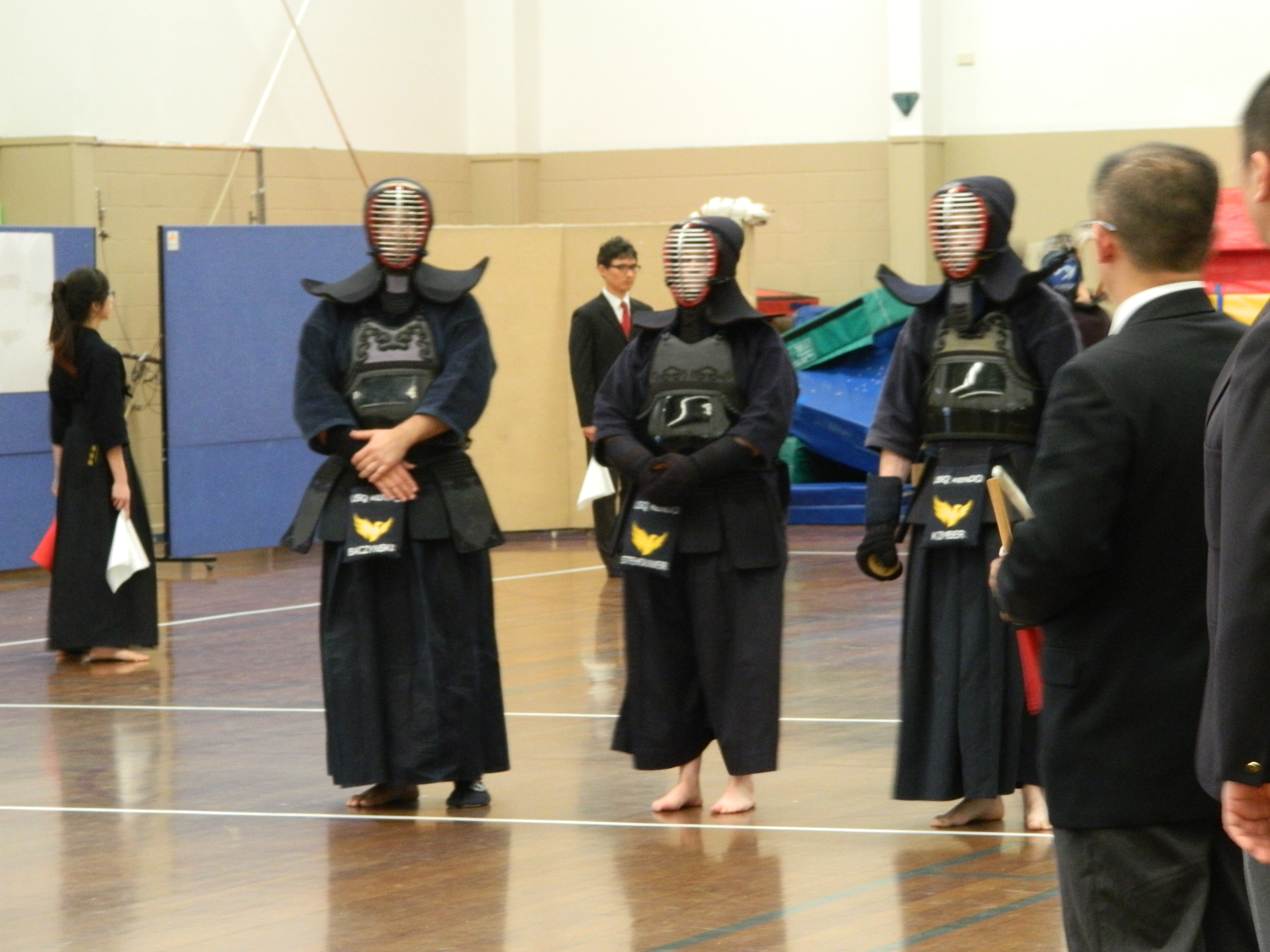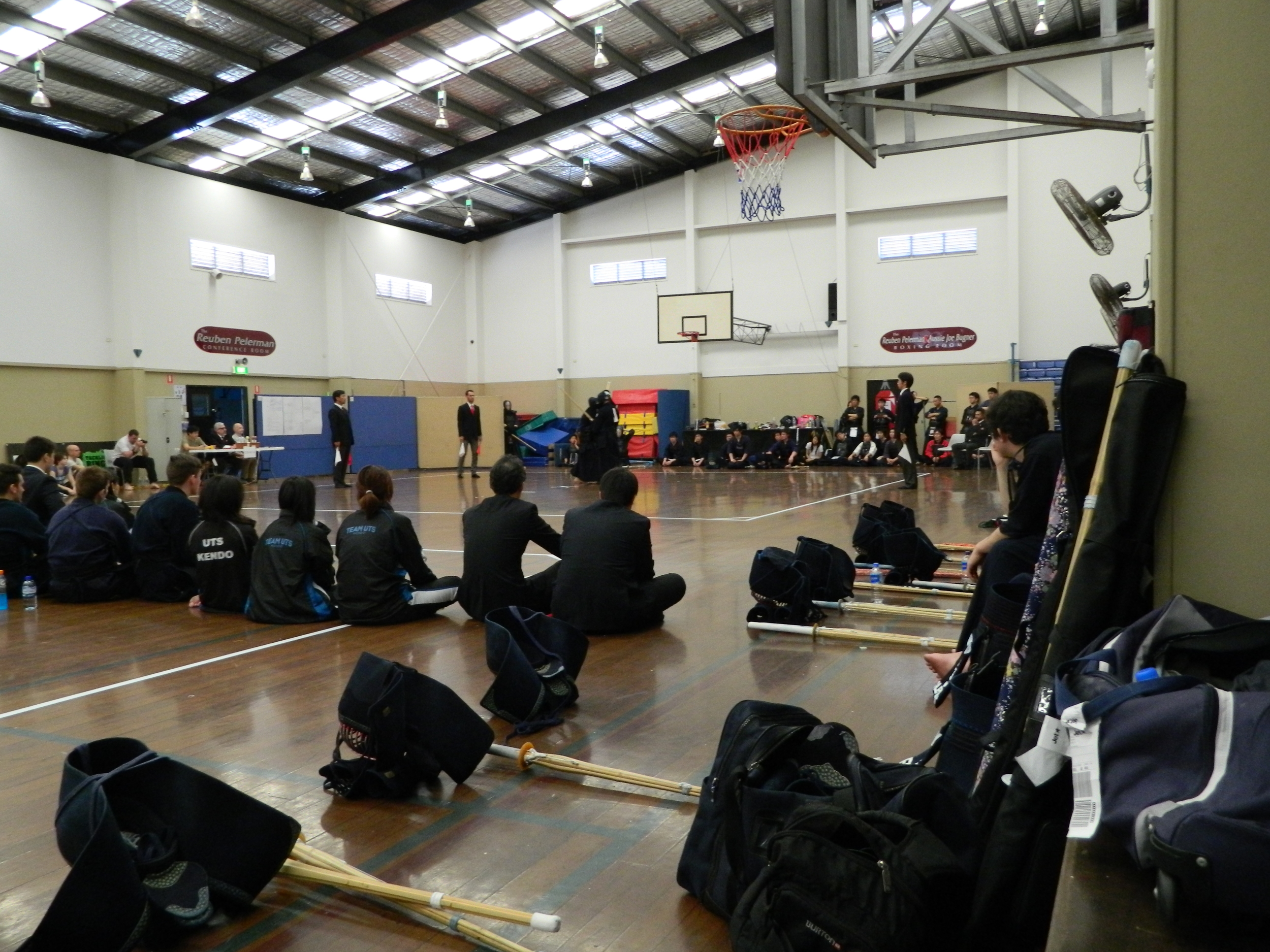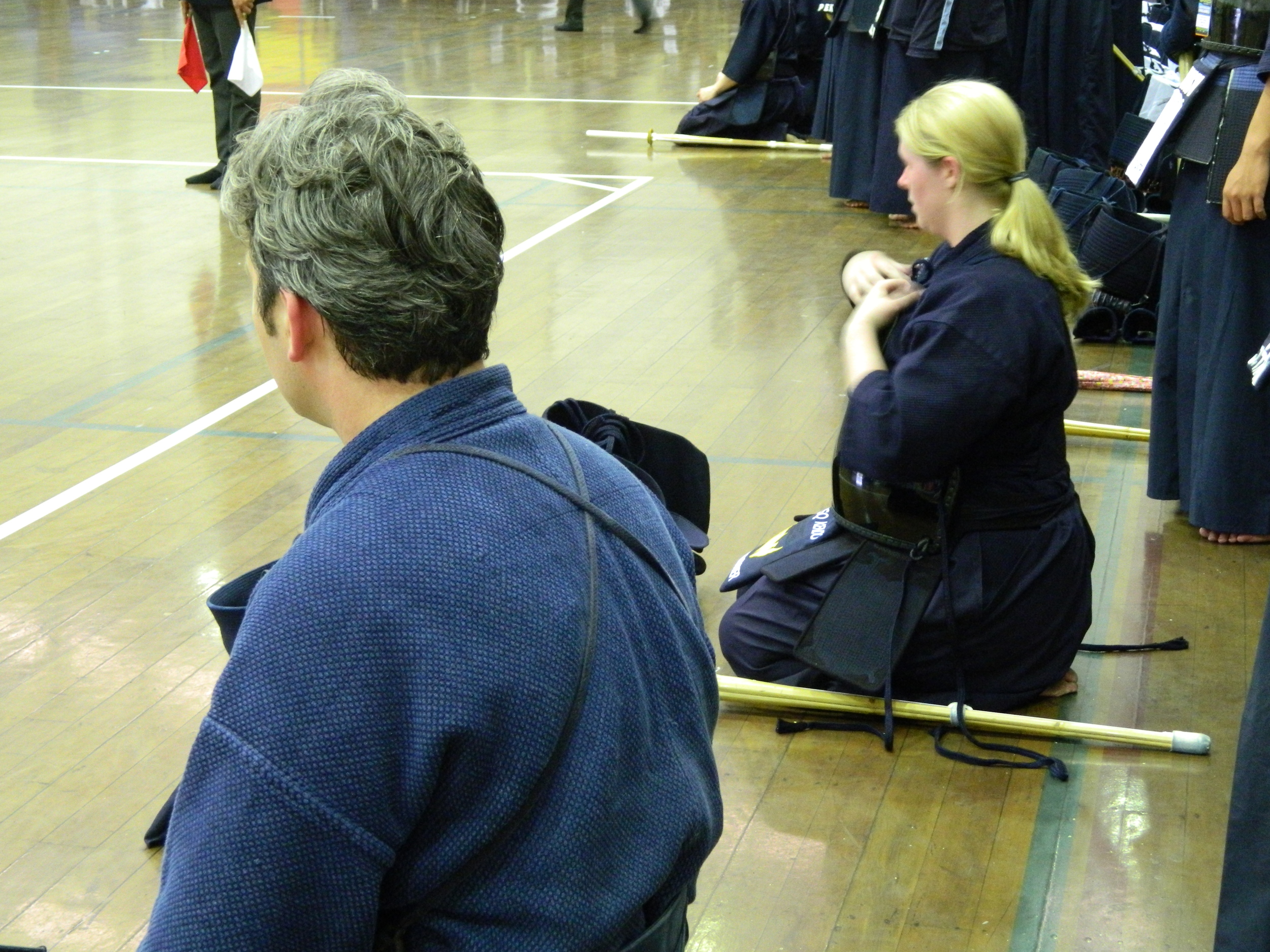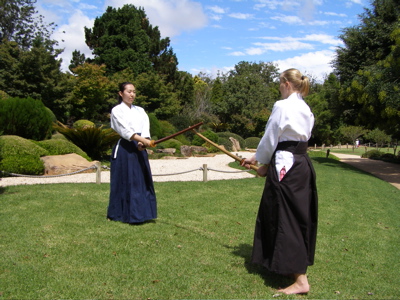Kendo is an Australian University Games Sport
Instructor: Mr Michael Baczynski Sandan • (e) michael.baczynski@bbrd.org.au • (p) 04 1144 2081
Coordinator: Mr Sean Thompson Nidan • (e) SeanSonofThom@gmail.com • (p) 0466 553 773
Associate instructors: Miss Kateena Martin Nidan, Mr Sean Thompson Nidan
Kendo (剣道) is the contemporary art of Japanese-style competitive fencing. Its modern form was developed from the 18th century as a way of distilling the essence of the many sword styles that had developed in Japan during the Edo period (1603–1868).
Practice is divided into two elements: kata, or two person pre-determined patterns; and keiko, or training aimed at developing levels of performance for shiai (competition). Core practice involves the use of shinai (竹刀) (bamboo swords) and bōgu (防具) (armour).
Kata is a non-contact activity that helps practitioners to develop correct distancing and footwork.
There are two types of kata, Nihon Kendō Kata (日本剣道形) and Bokutō Ni Yoru Kendō Kihon-waza Keiko-hō (木刀による剣道基本技稽古法). The former are the traditional set formalised in 1933, designed to preserve elements of koryu (ancient) sword traditions, and the latter were introduced in 2003 to help develop core skills used in kendo keiko. Kendo practitioners in the Toowoomba region are unusual in that we spend more time than many Clubs in practicing kata, particularly for lower grades. We train kata at lunchtime twice weekly in the Toowoomba Japanese Garden, and often time during regular practice.
Keiko is a contact-based activity that helps practitioners to develop their core skills for competition. It systematically goes through swinging practice (suburi) basics strikes on an opponent (waza-geiko), timing and striking practice (kiri-kaeshi and kakari geiko), and ultimately free practice (ji-geiko) leading to competitive matches (shiai).
In Japan kendo is a part of the school system, strongly represented at universities, keenly practiced by the police, and is practised by young and old alike —some of the oldest regular practitioners are in their 80s, leading to the saying that “kendo is for life”.
Make sure you check out some of the marvellous photos of Kendo taken by Andy Rogers, a firm friend of the Club, who currently lives in Nagoya, Japan — in part to pursue his passion for Kendo! The can be found at: http://kendomonochrome.com/
Kendo is an official Australian University Games sport. While a small Club we have experienced significant success at the 2009, 2011 and 2013 AUG.
Training
When:
Kendo Keiko
Thursday 6.00 – 7.30 pm
Saturday 2.00 – 3.30 pm
Currently we are unable to offer Saturday training due to the unavailability of a training space. We are looking to restore Saturday sessions as soon as possible
Where: (maps)
• Clive Berghofer Recreation Centre, 20 Baker Street (CBRC)
What to bring: Yourself, comfortable exercise clothes to start, water bottle. There are some bogu sets for hire at $2 per session.
Once you are training for a while: Indigo-blue Kendo uniform (uwagi and hakama), full set of bogu, shinai, and bokken. These can be obtained through the Club, or we can provide advice on what might be suitable.
You’ll need to: Pay Queensland Kendo Renmei membership ($90 payable once for QKR supported arts) plus Kendo discipline fee ($10) and BBRD general membership.
The Club is affiliated with the Australian Kendo Renmei and Queensland Kendo Renmei, and incorporates Mushin Itto Kendo Club to form a combined Toowoomba dojo. We also support Ken Jin Kan dojo in the town of Gin Gin. Club members regularly travel to train with other kendo groups in South East Queensland, and the Club has helped to facilitate a number of seminars in Toowoomba delivered by high ranking sensei.
